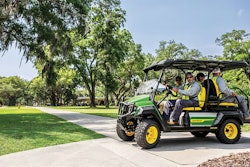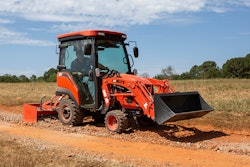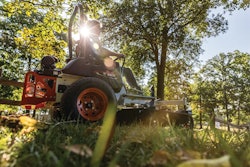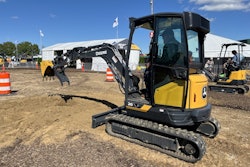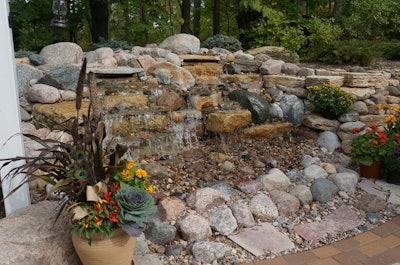 This waterfall, built into the woodland slope, adds a live element to the quiet oasis.
This waterfall, built into the woodland slope, adds a live element to the quiet oasis.Photo: Marcia Gruver Doyle
Water features have been common components of landscapes since ancient times. Formal ponds and pools were staples of Egyptian gardens thousands of years ago, and Mesopotamians used irrigated water to create and accent gardens as early as the third millennium B.C.
Because of their ability to mask noise, create a soothing atmosphere and provide visual interest, water features remain popular today. “We all like the sight and feel of water,” says Greg Darvin, owner of River Rock Landscaping and Pristine Pools in East Hampton, New York. “There aren’t many places on the planet where we can get that naturally.” He equates looking at a water feature to watching wood burn in a fireplace. “You can sit and watch the water all day and it’ll never flow the same way twice,” he says. “It’s relaxing.”
Thirty percent of Darvin’s projects include a water feature (other than a traditional swimming pool) compared with 5 percent to 10 percent of projects five or six years ago.
Chris Cipriano, owner of New Jersey-based Cipriano Landscape Design, says demand for both formal and informal water features is growing among his clients, too. “People want larger, more extravagant water features,” he says. “Each homeowner is striving to have something unique on his property.” One of the driving forces behind this trend is a desire to keep the family unit together, he says. Homeowners want features that will keep their children interested so they’ll spend time at their home rather than the neighbors’.
Waterfalls making big splash
Both Cipriano and Darvin say waterfalls are particularly popular. Cipriano says his clients – high-end homeowners – want their waterfalls to sport unusual features such as distinctive lighting and creative integration of plant material. To achieve the natural look they want, he builds irrigated planting pockets into the waterfall structures.
While his company constructs some waterfalls in conjunction with ponds, Cipriano says the trend for the past eight years in his area has been to build them with swimming pools. Elevated spas with water spilling into a pool are common as well.
Darvin, who works primarily with developers and builders of high-end spec homes that often cost $10 million to $20 million, says he suggests a waterfall to mask traffic noise when a home is close to a busy road. But clients have begun asking for waterfalls more often as well. “Having something different or unusual is a way for builders to make their projects stand out,” he says. The waterfalls he builds fall into two, polar-opposite categories: natural waterfalls with small fish ponds and modern-style water walls clad in an eclectic range of materials including stainless steel, copper or rough cement.
Reasons for this stark contrast include differences in architectural style, surrounding environments and the tastes of homeowners and designers with whom he works. A traditional house in the woods, for example, calls for a natural waterfall while a contemporary-style home requires a modern take on the feature.
Darvin says ponds are in fashion as well, especially for homeowners with small children. Because the features assume many aspects of a natural pond – with frogs and other wildlife living around them – they are a good way to introduce children to the natural environment. “A pond really takes on its own ecosystem after a few years,” Darvin says.
Don’t get in over your head
While rising demand for water features and the shift toward bigger, more complex designs are generally positive for landscapers, the trend can spell disaster for both you and your clients. Cipriano says a lot of people in his area are getting into the market without the necessary education and training. He recently had to tell a homeowner a large pond and waterfall another landscaper built needs to be ripped out because there was no structural engineering plan.
Large water features – 100 tons of water going over a 15-foot wall, for example – also can be dangerous. “You can’t just throw these structures up,” Cipriano says. Some associations and manufacturers that offer water feature construction programs are: Aquascape and the Association of Pool and Spa Professionals. Many state landscape associations offer classes as well.
Green water features?
The race is on to create green water features. Most product manufacturers are aiming their research at pools, but much of the technology will work with any water feature.
Your clients will pay more for products that incorporate the latest energy-conserving technology, but the return-on-investment period is often swift. Here are some things you can offer them:
- Smart pumps. A typical pump for a pool, pond or waterfall runs 24/7. But controllers are available that automatically draw down electricity consumption or turn off pumps at night, when no one is swimming or looking at water features. These controllers reduce energy usage by about one-quarter.
- On-site chlorine makers. These have been around for years, but are just now garnering attention due to rising chlorine costs (thanks to increased demand from China and high fuel costs) and the prevalence of salt water pools and spas. Residential units consist of a 12-inch-by-14-inch controller and a 3-inch-by-1-foot pipe where chlorine is made from salt in the water. Property owners save the cost of chlorine and delivery charges.
- Solar and geothermal heat. You can find systems that rely on these renewable resources to heat ponds, pools and spas. Your clients won’t pay anything for the energy they create.



